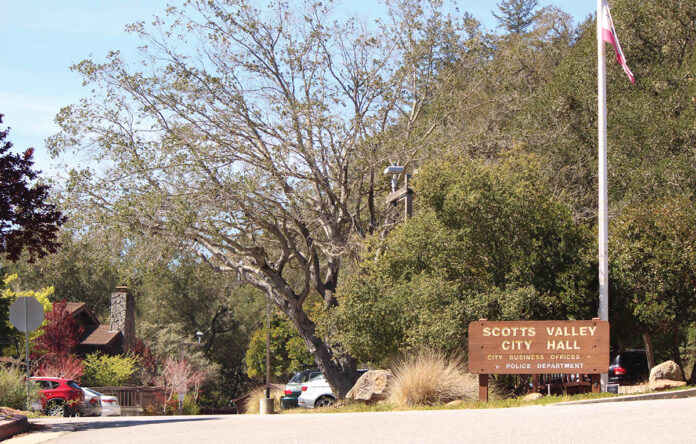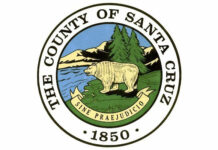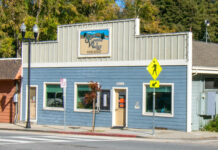It’s been a wild ride for Scotts Valley over the past several years, as it’s watched its future pension costs skyrocket, drop down slightly and then start to rise again.
Since fiscal 2013, the City’s “Unfunded Accrued Liability” (the difference between what it thinks it’ll be on the hook for and what it’s set aside to cover retirement payments) essentially doubled—from $10.8 million to $21.5 million.
Then, in fiscal 2020, the California Public Employees’ Retirement System (CalPERS) scored big on the markets, generating returns of 21.3%—dropping Scotts Valley’s UAL to $16.4 million.
However, fiscal 2021 wasn’t as kind to the pension and benefits manager, and it looks to have lost more than 6%.
So, Scotts Valley’s been warned it could see its UAL soar past $20 million again—to $23.8 million.
This was the backdrop, as Scotts Valley City Council gathered on Aug. 17, to plot a new course with its financial advisors, while CalPERS readies its final numbers.
Scotts Valley has been attempting to get ahead of retirees, jacking up annual contributions from half a million dollars in fiscal 2015 to $1.7 million in 2022-23.
That’s scheduled to continue to rise to $2.7 million by 2031-32, before eventually tapering off.
With so much taxpayer cash at stake, elected officials appeared completely zoned-in to the highly technical discussion with San Diego-based NHA Advisors, as they mulled a variety of investment strategies.
They heard about the possibility of saving thousands (about 3%) by making their full payment at the beginning of the fiscal year; re-amortizing their UAL over a shorter period under the “Fresh Start” program, which would mean lower overall interest but bigger payments and less flexibility; asking employees to kick-in more; and restructuring some—or all—of its UAL at a lower bond interest rate, similar to what Scotts Valley did in 2012.
However, throughout the evening, the moneymen and council members focused on two other potential routes, based around deploying the city’s reserves (or future surpluses).
These are: (1) Using a Section 115 trust—a third-party managed instrument used to cover pensions and other post-employment benefits, and (2) going with the CalPERS’ “Additional Discretionary Payment” approach.
A 115 trust, the council heard, can better reap the rewards of the markets and offers extra budget flexibility, since the city could pull money out if it wants.
The ADP strategy would involve giving extra money to CalPERS directly to invest, reducing the UAL, but Scotts Valley would no longer be able to access that money once it’s handed over.
NHA Advisors Vice President Michael Meyer said while reducing monthly payments by first going with the ADP option could free up money to be funneled into a 115 trust, Scotts Valley’s situation makes the 115 a good option from the get-go.
“There is some volatility there,” he said, referring to how reliant the community is on sales and hotel taxes—which the pandemic proved can fluctuate wildly. “The 115 might be a little better fit than sending all the money to CalPERS.”
Councilman Jack Dilles, who previously served as finance director for Scotts Valley, Santa Cruz and Morgan Hill, appeared pleased with the presentation
“These graphs are very helpful,” he said, as he dug into the minutiae of how payments would work, with lines of inquiry like, “Do we really pay it off, or, if there’s a loss, do they still charge us something additional?”
Meyer pointed out that if Scotts Valley chooses to send extra dollars to CalPERS when it comes to pension bonds, more money would then be at stake.
“Let’s say they go out and lose a lot of money,” he said. “You’ve just magnified those losses.”
Vice Mayor Jim Reed said UAL restructuring was looking, to him, like the way to go just a few months back, but that this option had “left the barn” thanks to rising interest rates.
Now, credit rating agencies are paying close attention to which investment strategy municipalities select, Meyer added.
“This is the number one challenge facing every agency in California, and the credit rating agencies understated that,” he said. “What is the plan to address the pension costs?”
Dilles wondered about the recent move by CalPERS to further leverage municipalities’ portfolios in the hunt for greater returns. He asked if that could be a problem as bonds lose value due to rising interest rates.
“I would say no,” Meyer said. “They have reduced the level of equity exposure.”
Vice Mayor Reed asked if the projected UAL drop in the 2030s was a result of new deals struck with employees.
Meyer confirmed that as payment requirements for “layers” of workers on the “classic” plan end, Scotts Valley can eventually start to pay out less money each month.
“Then they go away, and you’re left with the other layers,” he said, comparing it to making home payments. “You’re paying off all these different mortgages.”
Council voted unanimously to form an ad-hoc committee to further study the matter over the next few months.













